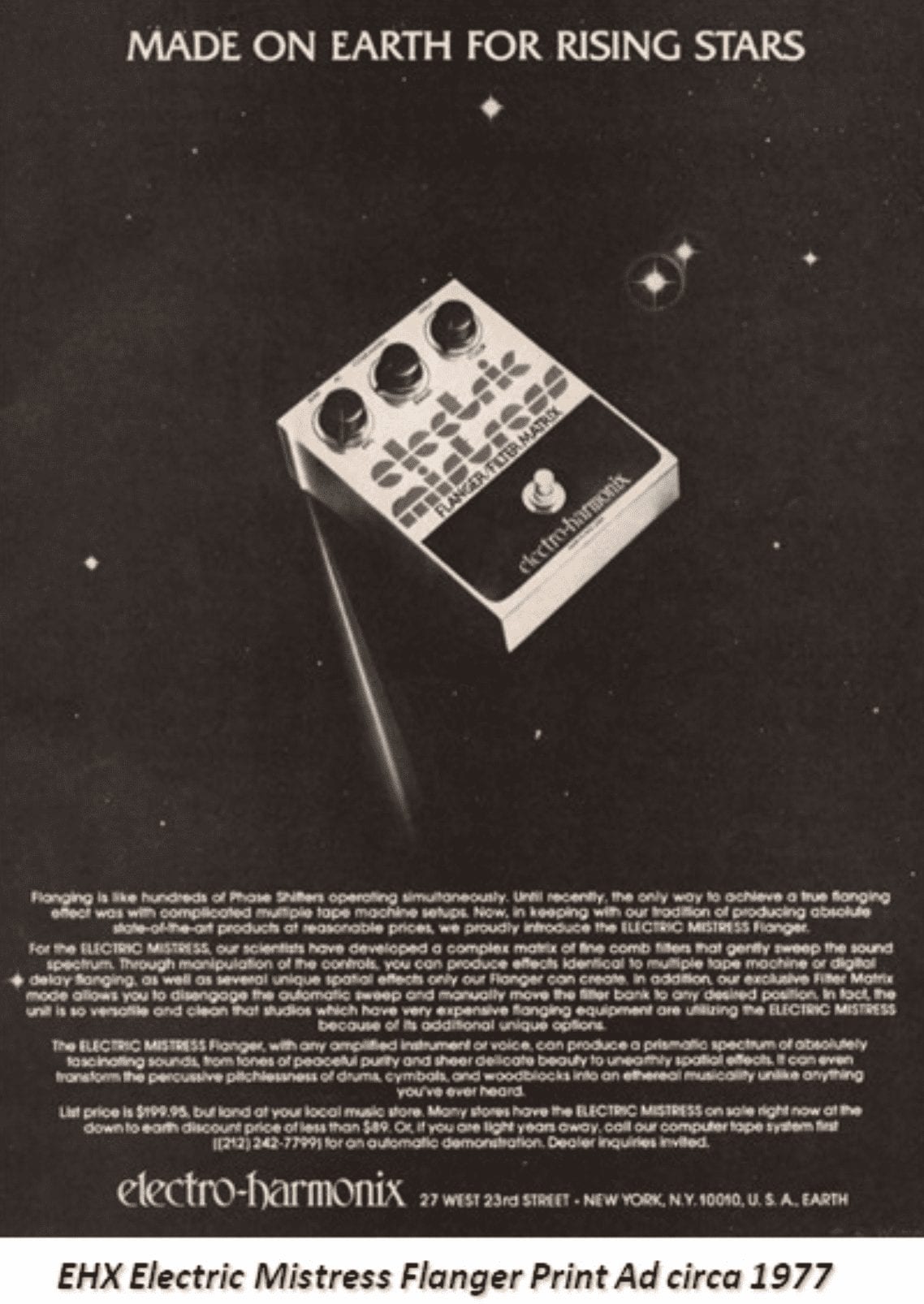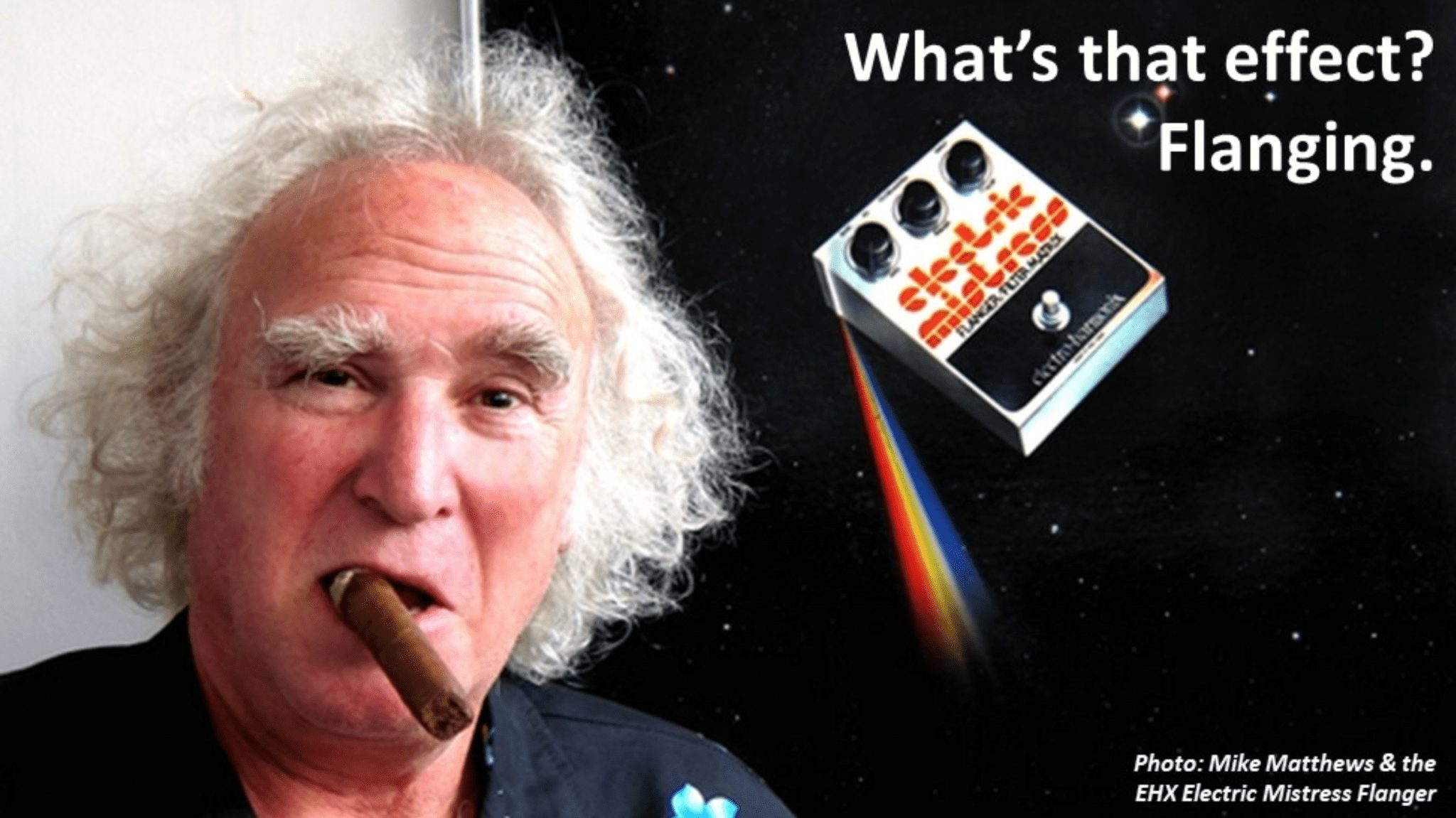Flanging is a modulation effect. Modulation is a broad category which also includes phase shifting, vibrato, chorus and more. Modulation effects change a sound over time. In the case of flanging what’s happening is that two identical audio signals are mixed with a very short delay applied to one. The delay time is not constant, though, it sways and varies. That’s how a flanger’s signature swooshing, swirling sound is achieved. It’s the sound of moving filtered peaks and troughs applied across the frequency range and can go from subtle to full-on jet-flange.
Originally, the effect was created in a studio and Les Paul is generally credited as the first person to put flanging on a record. The guitarist/engineer/inventor worked with acetate disks and variable speed turntables to make it happen.
While working with the Beatles, recording engineer Ken Townshend used two reel-to-reel tape recorders to playback the same signal. Townshend rested his finger on the flange of one reel and varied the pressure as the tape rolled. The resulting changes in the delay time created a flanging effect. The story goes that John Lennon coined the term “flanging” after observing the process! You can hear it on the Beatles tune “Tomorrow Never Knows,” which is on their Revolver album released in 1966.

Electro-Harmonix was one of the first companies to introduce a flanger pedal. That was in 1976 with the introduction of the Electric Mistress Flanger. EHX trivia: it used two 9 volt batteries. One of its earliest users was Pink Floyd’s David Gilmour according to Bjorn Riis, the David Gilmour scholar who hosts www.gilmourish.com. Gilmour used it with a Ram’s Head Big Muff on the band’s Animal Tour and it can be heard on the iconic album The Wall on such tracks as “Young Lust” and “Another Brick in the Wall 3.”
Since its origin, the Electric Mistress has always been part of the EHX product line. Currently it is available as the Deluxe Electric Mistress XO™, the Stereo Electric Mistress™ and the nano-sized Neo Mistress™. All deliver the unmistakable, lush flanging Electro-Harmonix is known for and have EHX’s unique Filter Matrix mode, which disconnects the LFO causing the flanger effect to be “frozen” in one place.
Our newer MOD11 Modulator™ pedal is a flanging powerhouse and, in addition to a ton of other modulation effects, can create Additive, Subtractive, Through Zero and Barber Pole flanging. Additive flanging is the effect most of us think of when we hear the word flanging. The original and modulated signals are combined and give us that traditional flanger pedal sound. With Subtractive flanging, the dry and modulated signals have reverse polarities when they are combined; they are out of phase with each other. This changes the character of the sound and makes it more intense. Through Zero flanging uses two modulated signals that are 180 degrees out of phase. When one signal passes from negative to positive and the other from positive to negative signal cancellation occurs at the zero point. Barber Pole flanging gets its name from the traditional barber’s pole, which features red, white and blue stripes that seem to spiral infinitely in one direction. So, rather than the sound going up and down, Barber Pole flanging creates the illusion that the sound and effect are moving in only one direction.
Flanging has been around for a long time. Check out The Small Faces circa 1967 doing “Itchykoo Park” and the 1968 Mike Bloomfield, Al Kooper and Steven Stills Super Sessions album, where the tune “You Don’t Love Me” is totally flanged out. They’re early versions of rock songs where flanging was employed. Fast forwarding a bit, here are some other excellent examples of songs that benefited from flanging: “Walking On The Moon” by The Police; “A Forest” by The Cure; “Numb” by U2; “Parallel Universe” by Red Hot Chili Peppers; “Breakout” by Foo Fighters and “Endors Toi” by Tame Impala. (Please note: we’re not saying that an EHX effect pedal was used on these songs. They’re just cool examples of the creative use of flanging.)
Flanging is an effect that’s definitely worth checking out. It can range from really subtle, almost there, to super intense. It’s also an effect that works well on a variety of instruments and can be combined with other effects like distortion to great effect (pun intended!).



